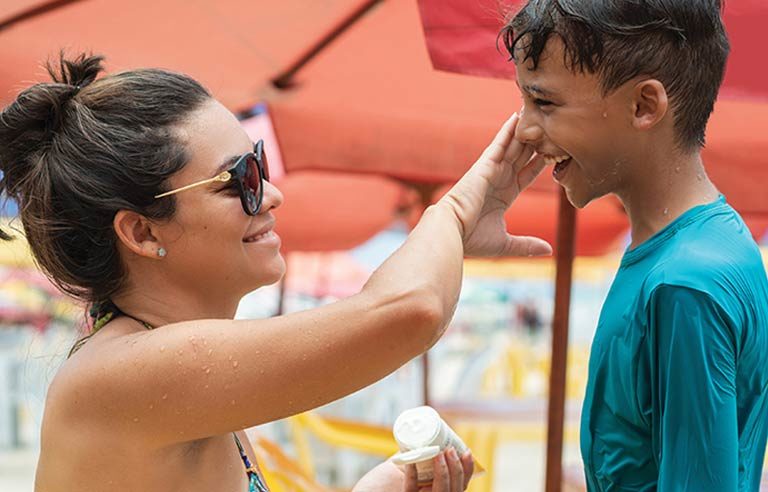Safe fun in the sun

The summer sun is one of the things that make trips to the beach, cookouts and other outdoor activities so special.
The downside: Exposure to the sun’s ultraviolet rays can lead to skin damage, cancer and other health problems.
But by taking some simple steps, you can stay safe while enjoying your fun in the sun.
Time of day
Although it might be tough, try to limit your time in the sun between 10 a.m. and 4 p.m. That’s when the sun’s damaging UV rays are the strongest.
You don’t necessarily have to stay indoors, but when you go outside, seek shade under an umbrella, a tree or other large object whenever you can during those peak sun hours.
Take extra care if you’re near water and sand because they can reflect the sun’s rays.
Sunscreen
Invented nearly a century ago, sunscreen is key to helping you avoid health problems related to UV exposure such as melanoma – the deadliest form of skin cancer. When applied to your skin, sunscreen serves as a layer of protection against the sun’s harmful UV rays.
The Environmental Protection Agency says you should cover all exposed skin with sunscreen about 15 minutes before heading outside. Then, reapply it every two hours – even on cloudy days – or immediately after being in water. You should reapply more often when you’re sweating or exercising. That’s because “water resistant” sunscreen isn’t waterproof, according to the American Cancer Society.
How much do you need? More than you probably think. The Food and Drug Administration says that “an average-sized adult or child needs at least one ounce of sunscreen (about the amount it takes to fill a shot glass) to evenly cover the body from head to toe.”
The key number to look for on your bottle of sunscreen is the sun protection factor. A sunscreen product with an SPF of 15 filters out about 93% of UVB rays, the ACS says, while an SPF 30 sunscreen will filter out around 97%.
“No sunscreen protects you completely,” says the ACS, which recommends you use products labeled “broad spectrum” to shield against both UVA and UVB rays.
The ACS adds that the FDA requires any sunscreen with an SPF below 15 to carry a warning that it only protects against sunburn and not skin cancer or any other skin damage.
Did you know sunscreen has an expiration date? Check the date on your bottle before applying.
The ACS also suggests giving your sunscreen bottle a shake to remix the ingredients if you haven’t used it in a while. Storage matters, too: Keeping your bottle in a hot place such as your car’s glove compartment may cause it to lose some of its effectiveness.
Post a comment to this article
Safety+Health welcomes comments that promote respectful dialogue. Please stay on topic. Comments that contain personal attacks, profanity or abusive language – or those aggressively promoting products or services – will be removed. We reserve the right to determine which comments violate our comment policy. (Anonymous comments are welcome; merely skip the “name” field in the comment box. An email address is required but will not be included with your comment.)
